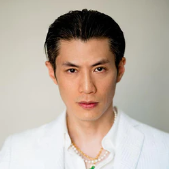Rife machines, originally developed by Royal Raymond Rife in the early 20th century, have been a topic of intrigue and debate for decades. These devices are designed to emit frequencies that proponents claim can target and destroy harmful microorganisms and even treat various medical conditions. While the use of Rife machines has often been associated with alternative or complementary medicine, there is growing interest in their potential applications within professional medical settings. In this article, we explore the use of Rife machines in medical contexts and the ongoing research in this field.
Understanding Rife Machines
Before delving into their professional use, it’s essential to understand the basic principles behind Rife machines:
- Frequency Healing: Rife machines operate on the premise that every microorganism and even healthy cells have specific resonant frequencies. By emitting the correct frequencies, these devices aim to disrupt and destroy harmful microorganisms like viruses, bacteria, and fungi, while leaving healthy cells unharmed.
- Bioresonance: Rife therapy is often associated with the concept of bioresonance, which suggests that the body emits electromagnetic frequencies that can be detected and influenced for therapeutic purposes.
Rife Machines in Professional Medical Settings
The use of Rife machines in professional medical settings is a complex and evolving area. While there is a historical association with alternative and complementary medicine, some healthcare practitioners are exploring the potential benefits of Rife technology when used alongside conventional medical treatments.
Areas of Professional Use
- Research and Clinical Trials: Some medical researchers are investigating the potential of Rife technology in laboratory settings and clinical trials. These studies aim to determine whether specific frequencies have therapeutic effects on certain medical conditions.
- Complementary Therapy: In some cases, healthcare providers use Rife therapy as a complementary approach alongside conventional treatments. This approach is often explored in integrative or functional medicine practices.
- Pain Management: Rife frequencies have been explored for pain management in certain medical procedures. For example, they may be used to alleviate pain and discomfort during dental procedures or minor surgeries.
- Adjunctive Cancer Care: In a few instances, Rife therapy has been considered as an adjunctive treatment in cancer care. It is essential to note that this is a highly controversial and experimental area, and such use should only occur within a well-informed and ethical medical framework.
Challenges and Considerations
The use of Rife machines in professional medical settings is not without challenges and considerations:
- Lack of Scientific Consensus: There is limited scientific consensus on the efficacy and safety of Rife therapy. More research and clinical trials are needed to establish its validity as a medical treatment.
- Regulatory Issues: Rife machines are not typically approved or regulated as medical devices in many countries. This lack of regulation can pose significant challenges for their use in healthcare.
- Ethical Concerns: The use of Rife therapy in professional medical settings raises ethical questions, particularly when used alongside established medical treatments. Patients’ informed consent and the integration of Rife technology into evidence-based practice are crucial considerations.
Conclusion
The use of Rife machines in professional medical settings is a complex and evolving field. While some practitioners are exploring their potential benefits, it’s essential to approach this technology with caution and within an ethical framework. More research and clinical trials are needed to determine the safety and efficacy of Rife therapy for various medical conditions. Until then, it remains an area of interest and debate within the broader landscape of healthcare options.

David Wong, also known as “The Qi Master,” is a successful entrepreneur and author who specializes in health, wellness, and Qi Energy. As the creator of Qi Life, he has developed groundbreaking frequency-based technologies that effectively improve health and quality of life. His journey began with self-healing an incurable digestive disease using frequency and energy devices, and his vision is to make physical and mental wellness accessible to all, without the need for invasive procedures or medication. Learn More >>>